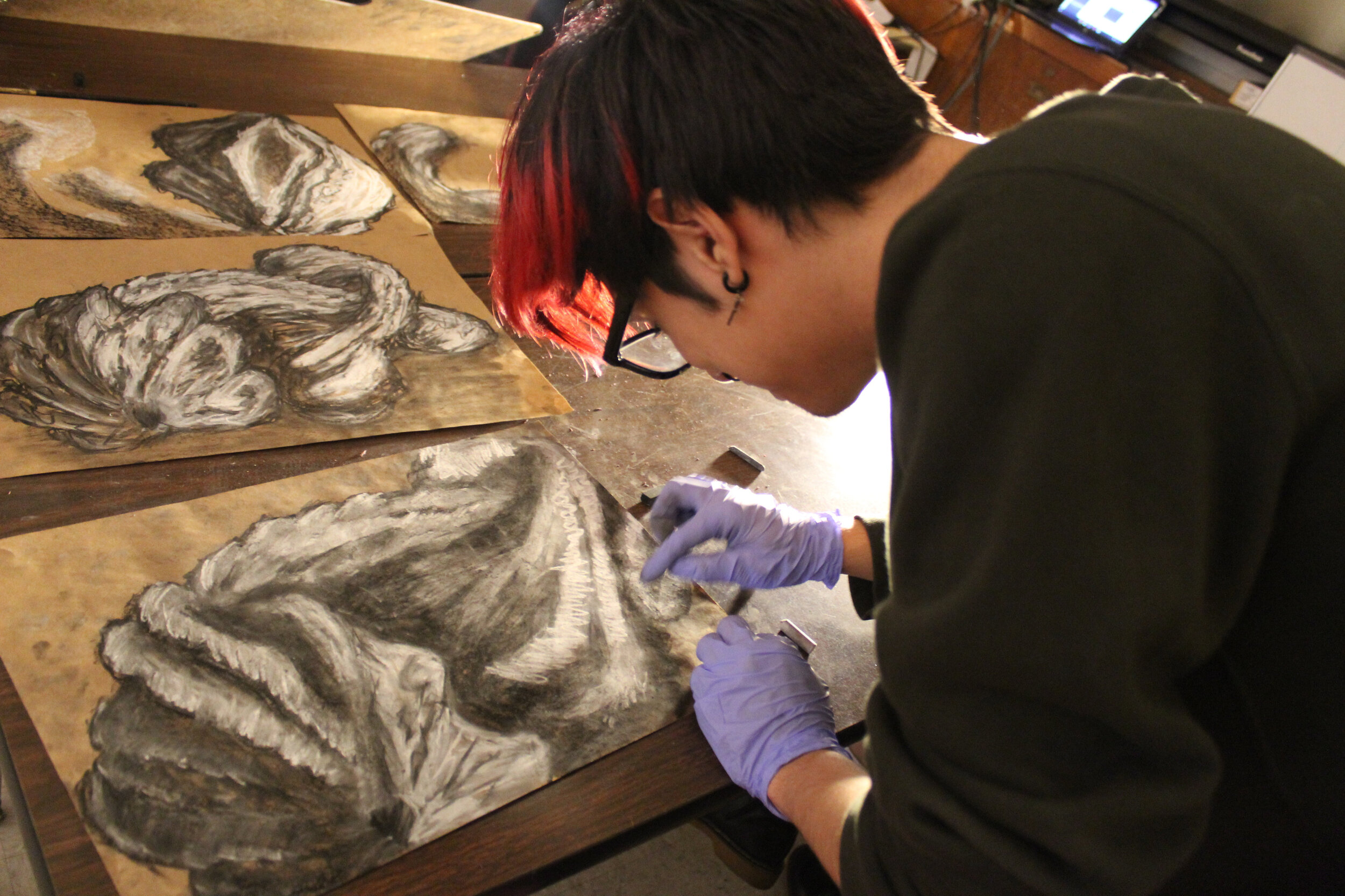"Art lays bare the questions which have been hidden by the answers."
- James Baldwin
Our effect on our students is felt by society long after they graduate, for it's in the classroom that they learn how to learn.
In my art classroom, the journey is as important as the destination, and students quickly learn that there are very few single "right or wrong" answers when making a work of art. Traditional and nontraditional materials and techniques are taught, allowing students at a wide range of abilities to develop the skills they need to depict their own experiences and ideas. Students are encouraged to create their own solutions to problems, developing flexibility and creatively approaching complex situations from more than just one proscribed (or assigned) angle.
I have taught students at a wide range of levels of prior knowledge, from students enrolled in pre-college summer courses or Advanced Placement classes to students going back to school after extended absences, with no prior access to art classes. In each case, I assess each student's artistic needs and "comfort zone" and help them accomplish more than they'd thought possible. With art in a less privileged position than it's had in the past, I understand that I often serve as an "ambassador" to the validity of visual art in our society. I take this role very seriously.
N.R's progress from uncomfortable beginner to proud artist:
Left to right: Nov., Gr. 10; Apr., Gr. 10; Apr., Gr. 11; Dec., Gr. 12.
My introductory classes use the standard "elements and principles" as a vehicle for creating artwork that the students see as truly theirs, not just assignments and summative assessments. The projects all align to specific benchmarks and learning objectives, but the end results feel like capital-a Art to the students and build the skills and growth mindset necessary for advanced study should they wish to continue.
My advanced classes (pre-college, Art II/III, Advanced Placement) balance "guided" assignments, to build skill and fill AP-portfolio slots, with an open, student-centered art studio derived from the Teaching Artistic Behavior model. My advanced students are confident enough in the "how" of artmaking that they can really dive into the "why." Their works serve as extensions of their own intellectual and creative thinking.
My practice as a teacher combines studio practice with art history, aesthetics and visual studies, presenting art to my students as a subject that exists more closely, and more crucially, than they might expect - art surrounds us, and it's not only those in the rarefied "art world" whose voices can be heard in it. Viewing, discussing and producing a broad range of art and design, students learn to draw thematic and visual connections between their own artwork, those of other artists, and the culture (or cultures) that surround them.
It is my deep pride to help students discover the artists inside them, and to nurture their nascent artistic minds so that they can develop the skills needed to make art, and the ideas they might not know how to express outside of art. By showing students that they can create, that their voices and ideas matter, I work to set the gears in motion for them to be productive, confident, proud members of adult society in years to come.


